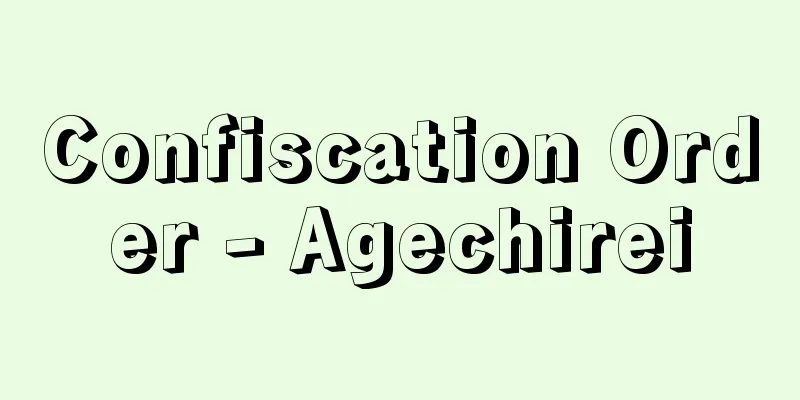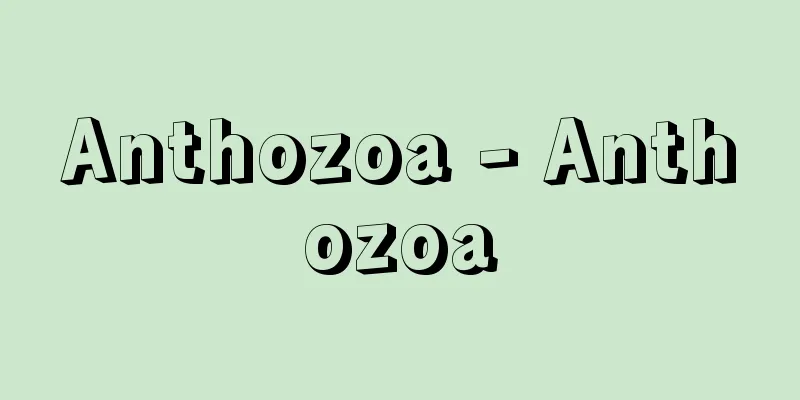Confiscation Order - Agechirei

|
This was a fief conversion order in which the Edo Shogunate took part of the territories of daimyo and hatamoto and gave them new territories in exchange. The most famous was the one issued in 1843 (Tenpo 14) as one of the important policies of the Tenpo Reforms. On June 1st, it ordered the confiscation of the area closest to Edo, on June 11th Niigata of the Nagaoka domain, and on June 15th the area closest to Osaka as Shogunate territory. In July, it became a law that covered Edo and Osaka collectively and ordered the confiscation of the nearest territories. Many private records of this law at the time interpret the area as Edo and Osaka, 10 ri square (some say Osaka was 5 ri square), but the law only says "the nearest territories." As it was expected that strong opposition would be leveled against this zoning order by feudal lords and hatamoto, it was decided to give land in return according to the amount of land zoning. However, in the areas closest to Osaka, peasants and townspeople feared that the loans and advance taxes they had lent to the feudal lords would be written off, and opposition movements arose in various places. This situation was also reflected within the shogunate, and even the senior councilor Doi Toshitsura, who had cooperated with Mizuno Tadakuni, turned against the zoning order. Due to the actions of the Wakayama Domain and the Ooku, the order was revoked on leap September 7th without being implemented in Edo and Osaka. However, in Niigata, it was implemented in October after Tadakuni was dismissed from his position as senior councilor on the 13th, and continued until the end of the Edo period. The reasons for issuing the confiscation order were to strengthen the Shogunate's finances by exchanging private lands, which offered higher tributes than the Shogunate's lands, and to reunify the economic base around Edo and Osaka, thereby strengthening the Shogunate's power. It also sought to strengthen defenses against foreign forces and bring important maritime traffic under the Shogunate's control. [Tsuda Hideo] Source: Shogakukan Encyclopedia Nipponica About Encyclopedia Nipponica Information | Legend |
|
江戸幕府が大名・旗本らの領地の一部を取り上げ、それにかわる領地を与える封土転換令をいう。もっとも有名なのが、天保(てんぽう)の改革の重要政策の一として1843年(天保14)に発布されたものである。6月1日にまず江戸最寄地(もよりち)一円を、6月11日に長岡藩の新潟を、6月15日には大坂最寄地一円を幕領として収公することを命じた。7月には江戸、大坂を一括して取り扱い、その最寄地の上知を命ずる法令となった。当時民間でこの法令の事実を伝える記録では、その範囲を江戸、大坂10里四方(大坂は5里四方とも)と解しているものが多いが、法令上は「最寄地」とあるだけである。この上知令は諸大名・旗本の強い反対が予想されたので、上知高に応じて代地を与えることで解決しようとしたが、大坂最寄地では百姓や町人らが領主に融通した貸銀、年貢先納銀などが棒引きにされるのを恐れて、各所で反対運動が起こった。このような状況が幕府内にも反映し、水野忠邦(ただくに)に協力していた老中土井利位(としつら)までが上知反対派に回り、和歌山藩や大奥の動きもあって、江戸、大坂に関する限り、実施をみないまま、閏(うるう)9月7日に撤回された。しかし、新潟に関しては、13日忠邦の老中罷免ののち、10月になって実施され、幕末まで続いた。 上知令の発令された理由は、幕領より貢租の高い私領と交換して財政強化を図ろうとしたり、江戸、大坂を中心に経済的基盤を再統一し、幕府権力の強化を図ろうとした政策である。また、対外的に防御を強化し、重要な海上交通も幕府の掌握下に収めようとするものでもあった。 [津田秀夫] 出典 小学館 日本大百科全書(ニッポニカ)日本大百科全書(ニッポニカ)について 情報 | 凡例 |
>>: Yang Cho San Cho - Agecho Sancho
Recommend
Gongsun Dragon
A thinker belonging to a distinguished family in ...
Ossification - ossification
The process by which bone tissue develops and is ...
Willem Bilderdijk
1756‐1831 Dutch poet and linguist. Born in Amsterd...
Wet dream -
〘 noun 〙 The occurrence of ejaculation accompanied...
yajña (English spelling) yajna
...a translation of the Sanskrit puja or pūjanā. ...
Flying membrane
A membrane-like structure used for gliding or fli...
Anabaptist (English spelling)
A Protestant sect. The name comes from the Greek ...
Institute of Space and Astronautical Science
Please see the "Institute of Space and Astro...
Rock button - Rock button
A small herbaceous plant in the Saxifragaceae fam...
American Renaissance
...WC Bryant praised nature and became the "...
Kingdom of Lydia
An ancient kingdom in western Asia Minor. Its capi...
Secret Imperial Edict of Bogo
In the last days of the Tokugawa Shogunate, in the...
materialistische Anschauung der Geschichte
…As can be seen from this example, opinions are d...
transfer orbit
...Therefore, orbital control during launch is pl...
Hanging - Ishi
Death by hanging, in which a person suspends hims...









